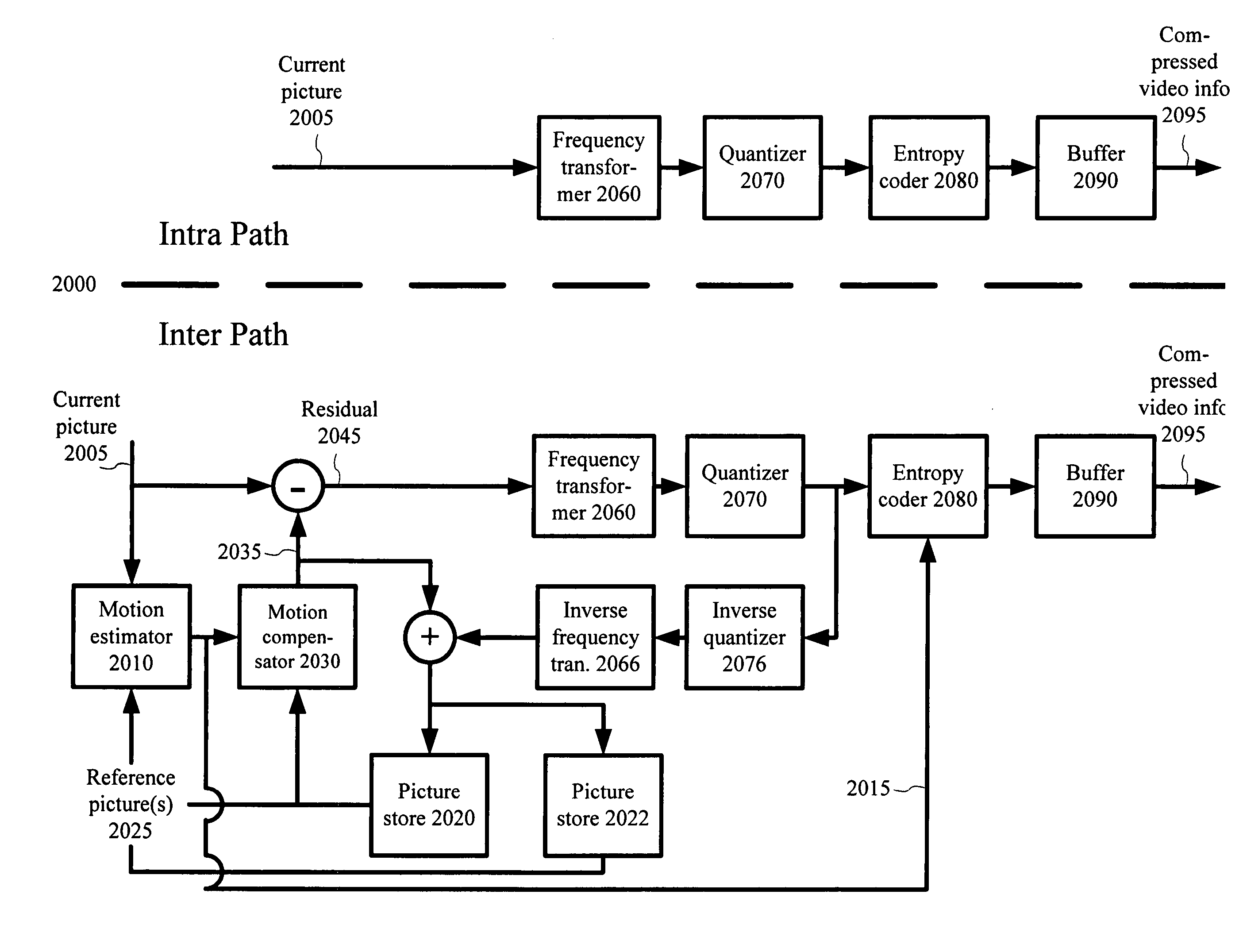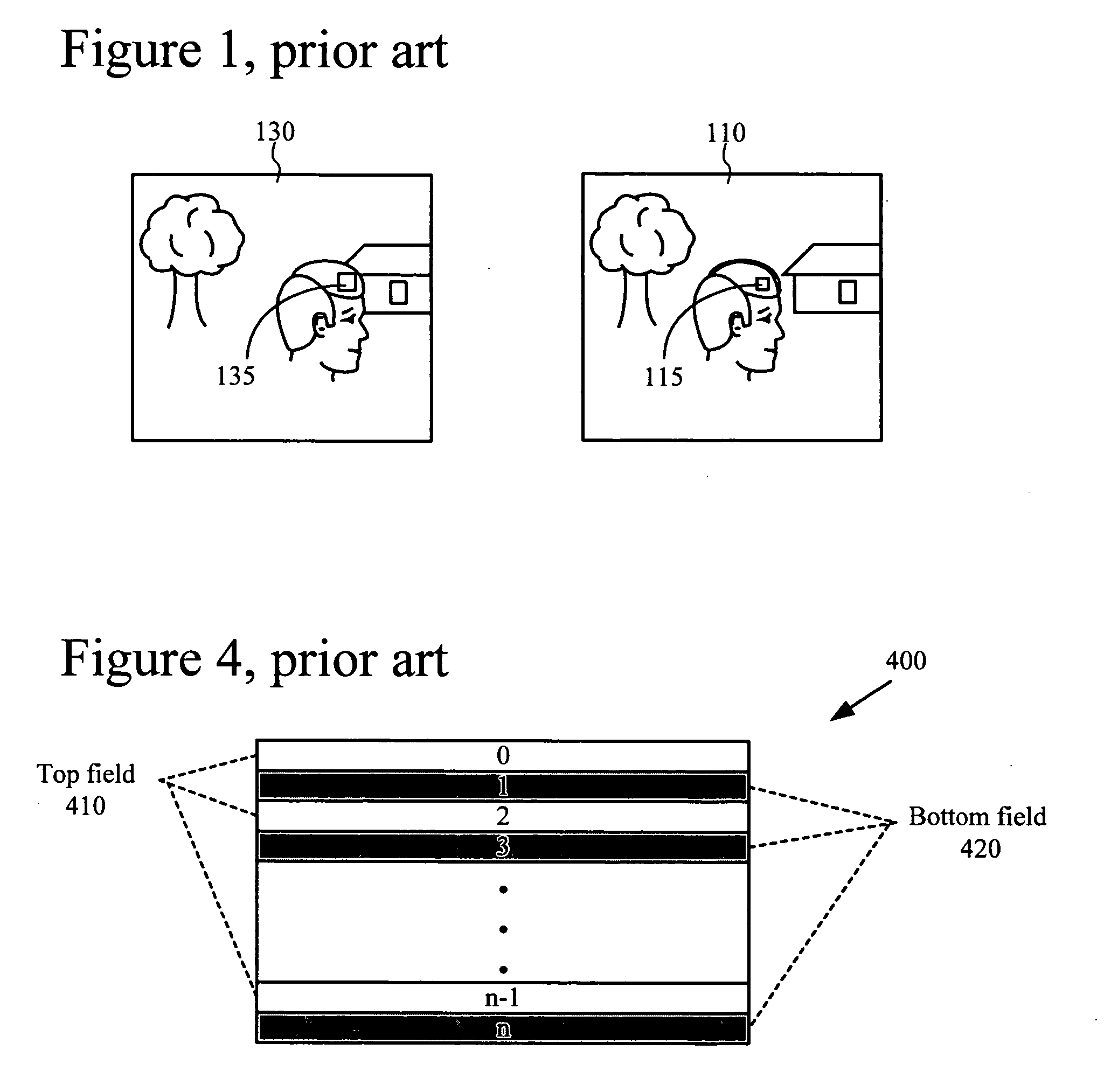Number of reference fields for an interlaced forward-predicted field
- Summary
- Abstract
- Description
- Claims
- Application Information
AI Technical Summary
Problems solved by technology
Method used
Image
Examples
Embodiment Construction
The present application relates to techniques and tools for efficient compression and decompression of interlaced video. Compression and decompression of interlaced video content are improved with various techniques and tools that are specifically designed to deal with the particular properties of interlaced video representation. In various described embodiments, a video encoder and decoder incorporate techniques for encoding and decoding interlaced forward-predicted fields, along with corresponding signaling techniques for use with a bitstream format or syntax comprising different layers or levels (e.g., sequence level, frame level, field level, slice level, macroblock level, and / or block level).
Interlaced video content is commonly used in digital video broadcasting systems, whether over cable, satellite, or DSL. Efficient techniques and tools for compressing and decompressing interlaced video content are important parts of a video codec.
Various alternatives to the implementat...
PUM
 Login to View More
Login to View More Abstract
Description
Claims
Application Information
 Login to View More
Login to View More - R&D
- Intellectual Property
- Life Sciences
- Materials
- Tech Scout
- Unparalleled Data Quality
- Higher Quality Content
- 60% Fewer Hallucinations
Browse by: Latest US Patents, China's latest patents, Technical Efficacy Thesaurus, Application Domain, Technology Topic, Popular Technical Reports.
© 2025 PatSnap. All rights reserved.Legal|Privacy policy|Modern Slavery Act Transparency Statement|Sitemap|About US| Contact US: help@patsnap.com



